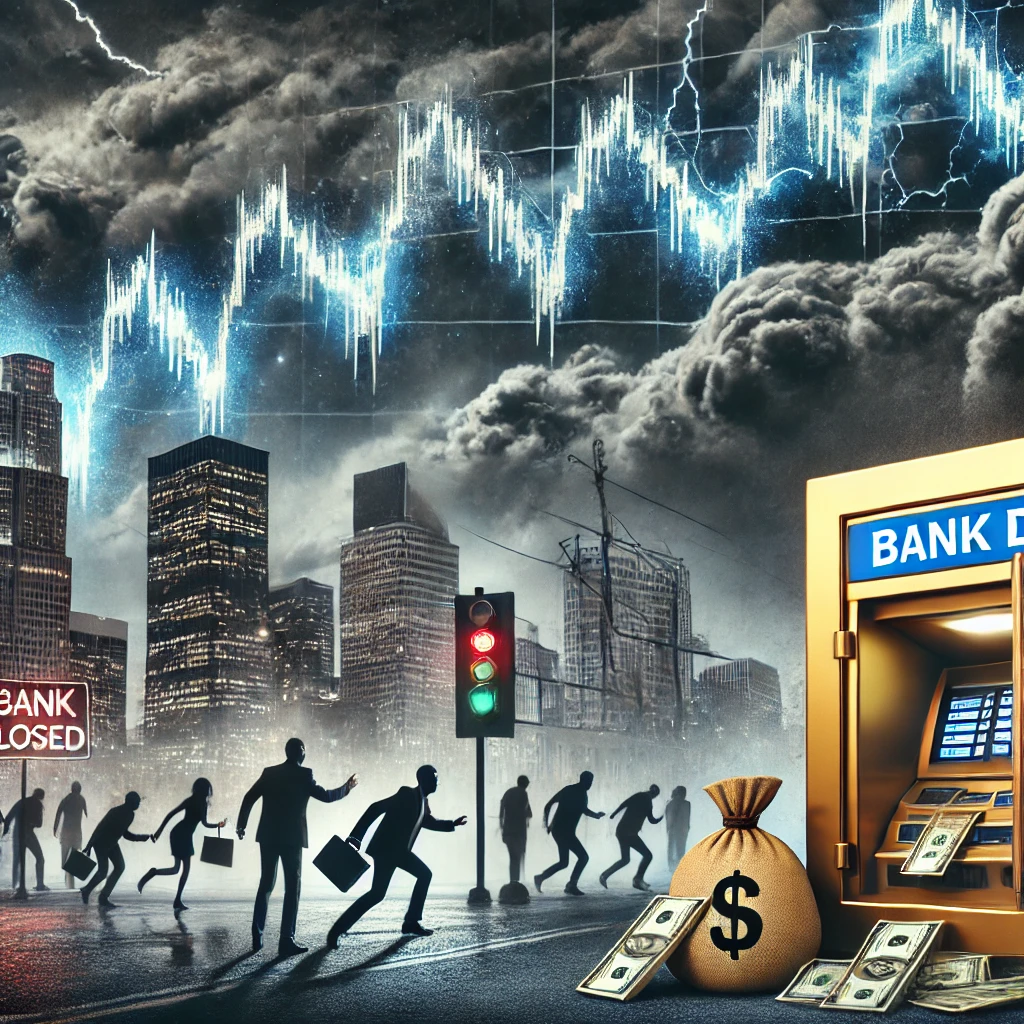The Great Collapse: Early Warning Signs of an Economic Tsunami

In the ever-fluctuating world of global finance, history has shown that economic downturns do not occur overnight. Like a tsunami, they are preceded by early warning signs—indicators that suggest a major collapse is on the horizon. As we navigate through uncertain times, several predictive models and economic markers signal that a Great Collapse may be imminent.
The Yield Curve Inversion: A Classic Red Flag
One of the most reliable recession indicators is the inversion of the yield curve. This phenomenon occurs when long-term interest rates fall below short-term rates, signaling that investors foresee economic turmoil ahead. Historically, every U.S. recession in the past 50 years has been preceded by an inverted yield curve. The current state of bond markets suggests that investors are hedging against an economic slowdown, which could indicate an approaching crisis.
Machine Learning and Econometric Predictions
Advanced machine learning algorithms and econometric models have enhanced the ability to forecast economic downturns with increasing accuracy. Moody’s and other financial institutions utilize AI to analyze vast amounts of market data to predict recessionary trends. Recent studies using deep neural networks, such as Bi-LSTM with Autoencoder models, have shown an ability to predict the onset and end of U.S. recessions with remarkable precision. These models are currently flashing warning signs, suggesting economic turbulence ahead.
The Role of Credit Growth and Financial Bubbles
Rapid credit expansion has historically preceded financial crises, from the Great Depression to the 2008 housing crash. A significant increase in corporate and consumer debt can create a fragile economic structure that collapses under pressure. Studies indicate that excessive credit growth often triggers downturns, as witnessed during the dot-com and housing market bubbles. Financial analysts are now warning of new bubbles forming in real estate, technology stocks, and cryptocurrency markets, signaling potential economic distress.
The Resurgence of Gold Buyers: A Flashback to 2008
A striking indicator that many overlook is the increase in advertisements from gold buyers. During the 2008 financial crisis, commercials flooded the airwaves urging people to sell their gold. That same pattern is emerging again, signaling economic uncertainty. The resurgence of these ads suggests that those who understand market trends anticipate a financial downturn, positioning themselves to acquire assets of real value before a collapse deepens.
Government Layoffs and Public Fear
Another major red flag is the mass firing of government employees. Large-scale layoffs within government agencies not only cause economic distress for those affected but also lead to widespread fear and instability. When people sense insecurity in government jobs—historically considered stable—it shakes consumer confidence, increasing personal debt levels as individuals turn to credit cards to survive. The psychological impact of these layoffs can trigger a broader economic slowdown.
Credit Tightening and Surging Debt
Financial institutions are already taking defensive measures. Chase and other major banks are cutting back on credit card approvals and reducing credit limits. This is a sign that banks expect higher default rates and are mitigating risks in advance. As inflation drives up the cost of living, more people will rely on credit to make ends meet. The cycle of increasing debt and reduced access to credit could further destabilize the economy.
Food Prices and the Rising Cost of Living
Escalating food prices are placing further pressure on households. The cost of basic necessities is rising faster than wages, leading to a decrease in purchasing power. Inflation in essential goods, coupled with economic instability, can create a crisis where survival expenses outpace income, further deepening financial strain across all classes.
Political and Economic Turmoil: A Perfect Storm
The U.S. government is experiencing increased division, uncertainty, and policy shifts that add to economic instability. The combination of internal political conflicts, international tensions, and economic struggles is a recipe for disaster. Historically, economic downturns are often accompanied by external conflicts, and there are growing indications that the U.S. may be headed toward another war. This would significantly increase national debt, redirect resources away from domestic stability, and further accelerate an economic collapse.
Is This a Manufactured Crisis?
One of the biggest questions looming over this situation is whether the collapse is intentional. There is a growing belief that the economy is being strategically dismantled to usher in a new era of AI-driven automation, digital currencies, and corporate-controlled economies. A financial collapse would force societal restructuring, pushing people to adapt to technological advancements that may centralize power in the hands of elites. The oligarchs behind the current administration may have an agenda to break down the old economic system to introduce a new financial order that benefits a select few.
Solutions: How to Prepare for the Collapse
Understanding the warning signs is only the first step—taking action is what will make the difference in weathering the storm. Here are some key steps to protect yourself and your assets:
- Acquire Physical Gold or Silver: Having even a small amount of physical gold or silver can serve as a financial safety net. Unlike fiat currency, precious metals retain value and can be used as a hedge against inflation and bank failures. Consider purchasing whatever you can afford as a backup.
- Do Not Fully Trust Banks: The financial system is fragile, and recent bank failures have shown that deposits may not always be safe. With the possibility of frozen accounts or a run on banks, it’s essential to keep a portion of your wealth in a secure, non-bank location, whether in cash, precious metals, or alternative assets.
- Diversify Your Assets: Avoid putting all your wealth in a single institution. Spreading assets across multiple financial instruments, including cryptocurrencies, real estate, and tangible goods, can mitigate risk.
- Have Emergency Cash Reserves: Store cash in a safe location to cover essential expenses in case of banking disruptions or ATM failures. A goal of at least $5,000 in emergency funds can provide crucial financial flexibility during a crisis.
- Reduce Debt and Cut Unnecessary Expenses: With credit tightening, now is the time to pay off high-interest debt and reevaluate spending habits. Avoid new liabilities and focus on maintaining financial independence.
- Invest in Self-Sufficiency: Consider ways to become more self-reliant. This could include starting a home garden, owning chickens for fresh eggs, or learning new skills that provide financial or survival advantages.
- Support Local and Small Businesses: Spending money within your community helps sustain local economies and reduces reliance on corporate giants that may falter during a downturn.
- Educate Yourself: A great book to read is Eat the Rich, Slap the Poor, which offers insights into economic cycles and survival strategies for financial downturns.
Conclusion: A Call to Action
While economic models and historical trends provide strong indicators of an impending Great Collapse, the exact timing remains uncertain. However, the warning signs are clear—yield curve inversion, credit market instability, declining consumer confidence, rising unemployment, and global economic slowdowns are converging. Now, with mass government layoffs, tightening credit, surging debt, and a potential war on the horizon, we are witnessing an orchestrated shift in economic power.
The key to navigating turbulent times is preparation. By taking steps to secure assets, reduce financial vulnerabilities, and invest in self-sufficiency, individuals can weather the coming storm. Just as early warnings can help mitigate the devastation of a tsunami, recognizing these economic red flags can help us brace for the challenges ahead.








